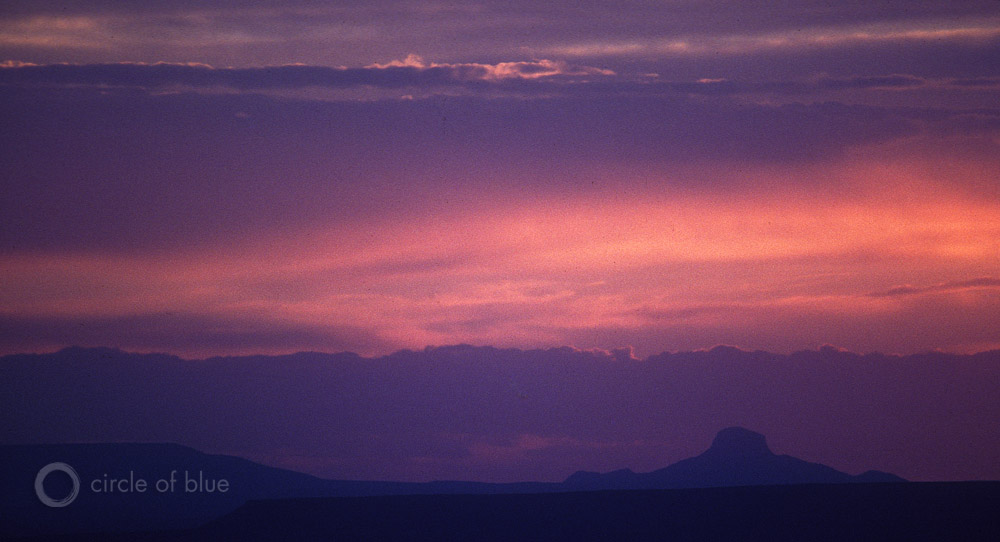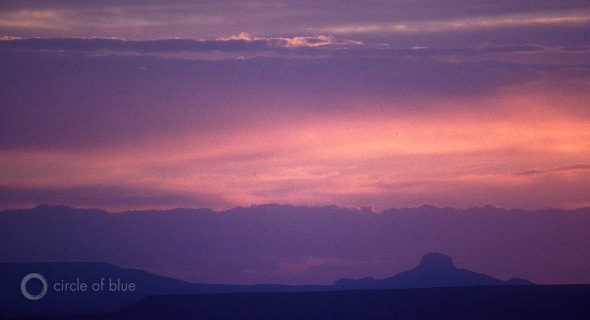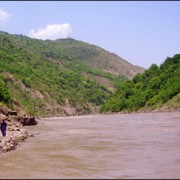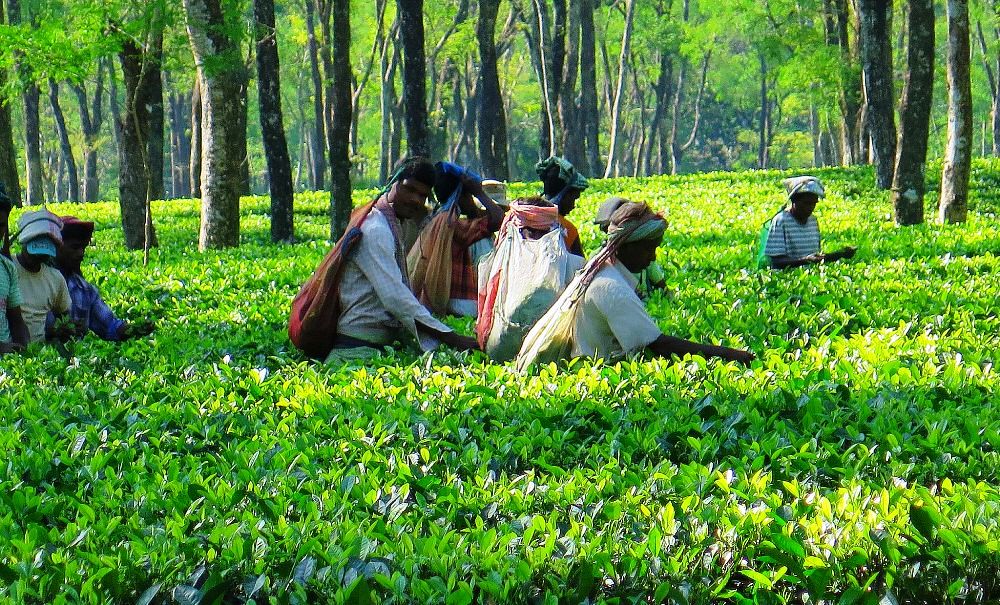U.S. Drought’s Shifting Epicenter – It’s New Mexico’s Turn
Reservoirs are nearly empty, wells are being drilled deeper, and litigation abounds.

By Brett Walton
Circle of Blue
The drought that covered most of the United States last year has relented in the Midwest, where some states saw record rainfall this spring. But the extremely low moisture conditions now grip New Mexico, the new epicenter of a cell of intense water scarcity that has shifted across the U.S for several years.
The plains states, Nebraska and Kansas, were hit worst last year. Texas was driest in 2011. The Southwest, in fact, has experienced middling precipitation for more than a decade, conditions that set the stage for New Mexico’s year of terrible dry. Some 90 percent of the state is in extreme or exceptional drought, the harshest categories in the U.S. Drought Monitor. Only a quarter of the state was in such condition a year ago.
Precipitation is also at record lows. The June 2012 to May 2013 period was the driest in the state’s 118-year record. Southern Colorado, whose mountains are the source of the Rio Grande River, New Mexico’s principal source of surface fresh water, has not fared much better. Worst of all is the corridor the river traverses in New Mexico. The central valley and the southern deserts have seen roughly a quarter of normal precipitation since October, according to the National Weather Service.
“We’re breaking the wrong kind of records,” Gary Esslinger, who manages the Elephant Butte Irrigation District, in Las Cruces in southern New Mexico, told Circle of Blue.
Esslinger cites his district’s main water supply, the nearly empty Elephant Butte Reservoir, as the most tangible evidence. When the gates at a secondary reservoir just downstream of Elephant Butte close today, the shortest ever irrigation season for the federal Rio Grande Project, which dates to 1915, will end, little more than a month after it started. The Rio Grande Project typically provides sufficient water to irrigate 78,000 hectares (193,000 acres) along the river in New Mexico and Texas.
–Gary Esslinger, manager
Elephant Butte Irrigation District
Years of drought have turned “normal” on its head in New Mexico, with wide-ranging consequences for the state’s economy and natural resources. In the area watered by the Rio Grande Project, a land of alfalfa fields and pecan orchards, a normal irrigation season lasts eight months. The last time that happened, though, was in 2000, Esslinger says.
The Rio Grande Project, operated by the Bureau of Reclamation, doles out river water to farmers in irrigation districts in southern New Mexico, west Texas, and Mexico, as well as to the city of El Paso, Texas. This year each received only 6 percent of a normal water allocation.
Many farmers, at least those who haven’t given up on a crop, will turn to groundwater to see them through, as will cities. Yet that act of salvation has prompted lawsuits from downstream Texas and warnings from state officials that, in the long term, groundwater pumping is unsustainable.
Breaking the Wrong Records
New Mexico’s big dry has spared few areas of the state. Fires have torn through the Gila and Santa Fe national forests this year, leading to concerns about the watersheds that supply cities and towns. Rising demands from oil and gas development compelled Carlsbad, in the southeast, to triple its industrial water rates earlier this year. Moriarty, a town of 1,900 east of Albuquerque in central New Mexcio, to restrict sales of water in bulk, most of which go to oil and gas customers. Farmers elsewhere in the state have called for an enforcement of water rights.
Farmers in the Elephant Butte Irrigation District, perhaps better than anyone, know drought. Elephant Butte Reservoir, their source of water from the Rio Grande and the main reservoir for the Rio Grande Project, is lapping at the bottom of the lake, at just 3 percent of capacity.
When supplies from the river run out, farmers turn on the pumps to pull water from aquifers. That safety net has cushioned the blow from scant surface water.
“We’re still pretty much agriculturally stable down here,” said Esslinger, who does not anticipate much drop in farm yields. “Credit goes to the farmers for stretching water and being innovative.”
Those innovations include using lasers to create perfectly flat fields and installing drip irrigation to minimize water loss. The irrigation district, for its part, has lined canals.
Just Add Groundwater – For Now
Groundwater, however, remains the key ingredient for farmers who want to endure and survive the drought. They are drilling more wells, and drilling them deeper in the ground.
Roman Gonzalez, who develops water wells and works for Acosta Drilling based in Lamesa, Texas, told Circle of Blue that his company has a three-month backlog. New wells, he said, are being drilled down as much as 91 meters (300 feet), nearly five times deeper than before the drought.
A well that deep is expensive; up to $US 45,000 for an irrigator. Jesus Reyes, general manager of the El Paso County Water Improvement District, told Circle of Blue that many small farmers, those tending less than 40 hectares (100 acres), have suffered the most. These “weekend” farmers usually raise crops in addition to holding down another job and can’t afford such an investment. Farmers in the district have cut the amount of cultivated land by 6,000 hectares (15,000 acres) this year compared to last, Reyes said.
–Jesus Reyes, general manager
El Paso County Water Improvement District
Even municipal suppliers are dipping into the aquifers. The city of El Paso, where 666,000 people live, will increase its groundwater pumping by 75 to 80 percent compared to an average year, El Paso Water Utilities spokeswoman Karol Parker told Circle of Blue. The city also has a desalination plant, but Parker said it will not need to ramp up production because groundwater is sufficient right now.
All this pumping prompted the state of Texas to file a complaint with the U.S. Supreme Court in January asserting that excessive groundwater use in New Mexico was cutting into water that would wind up in the river and flow downstream.
Scott Verhines, the New Mexico state engineer, called the lawsuit an attack, but a year ago he acknowledged that record levels of groundwater pumping in the Elephant Butte Irrigation District are “unsustainable.”
The wells will keep farmers and cities flush for now, even without surface water. But the strain on the aquifers bodes ill for the future.
For those who work the land, for the weekend farmers who can’t afford a new well, the future is a distant thought compared to the immediate problems caused by the drought. “Next year is looking really bad if we don’t get some rain and have a good winter,” Reyes said, thinking about the forecast for the Rio Grande. “We might be in worse condition next year. Maybe no irrigation.”
Brett writes about agriculture, energy, infrastructure, and the politics and economics of water in the United States. He also writes the Federal Water Tap, Circle of Blue’s weekly digest of U.S. government water news. He is the winner of two Society of Environmental Journalists reporting awards, one of the top honors in American environmental journalism: first place for explanatory reporting for a series on septic system pollution in the United States(2016) and third place for beat reporting in a small market (2014). He received the Sierra Club’s Distinguished Service Award in 2018. Brett lives in Seattle, where he hikes the mountains and bakes pies. Contact Brett Walton











You have to understand that water is a finite resource and that your aquifers are not to recover in the forseeble future. According to very serious geohydrulic studies carried on 3 aquifers in the state of Guanajuato in central Mexico,tracing the content of deuterium (hydrogene isotope) liberated into the atmosphere with the Japan´s atomic bombs in 1945, in 2500 wells. The hypothesis was that if Deuterium was present in the deep wells, dragged into the rain water, meant that there was positive recover of the aquifers. By 2008 the deuterium hadn´t reach the aquifers in 80% of the deep wells (2000 wells). The research team monitored the water content of 70 elements (in 2500 wells) from the Chemical Periodical Table so it was a profound study. The study was backed and sponsored by The National University (UNAM). Sorry for my bad english
If New Mexico’s climate is so dry and this state is so prone to drought, perhaps the alfalfa and pecan growers should take their farms elsewhere. I mean, you can’t get blood from a stone… nor should you even try.